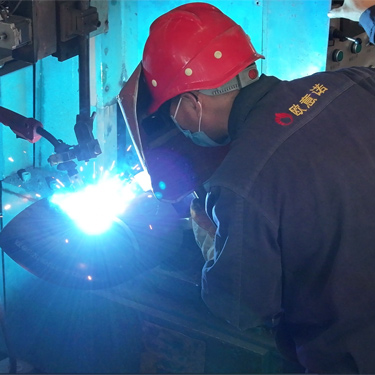
Oct . 30, 2024 21:46
Back to list
مبادل حراري للغاز
Heat Exchangers for Gases An Overview
Heat exchangers are essential devices used in industrial and engineering applications to transfer heat between two or more fluids, which may be liquids, gases, or a combination of both. When discussing heat exchangers specifically designed for gases, their importance in various sectors becomes even more pronounced due to their role in improving energy efficiency, reducing emissions, and optimizing processes.
A gas heat exchanger operates on the principle of thermal transfer, allowing heat to move from a hot gas to a cooler one without mixing the two fluids. This process is crucial in numerous applications, from power generation to HVAC (heating, ventilation, and air conditioning) systems. The efficiency of a heat exchanger is influenced by the surface area available for heat transfer, the temperature difference between the hot and cold gases, and the flow arrangement, which can be counterflow, parallel flow, or crossflow.
.
In industrial settings, gas heat exchangers are utilized in processes such as natural gas processing, petrochemical production, and power generation. For instance, in a combined cycle power plant, gas turbines generate electricity while producing hot exhaust gases. A heat exchanger captures this exhaust heat, transferring it to a steam generator, where water is converted into steam to drive a steam turbine, thereby improving the overall efficiency of the power plant.
مبادل حراري للغاز

The selection of materials for gas heat exchangers is also a crucial consideration. They must withstand high temperatures and pressures, as well as resist corrosion and fouling. Common materials include stainless steel, carbon steel, and various alloys, chosen based on the specific operating conditions and fluids involved.
In terms of design, engineers must consider several factors to create efficient gas heat exchangers. This includes optimizing the flow paths to minimize pressure drop, ensuring adequate surface area for heat transfer while keeping the structure compact, and facilitating easy maintenance and cleaning to prevent fouling that can degrade performance.
Moreover, advancements in technology have led to the development of novel heat exchanger designs, such as printed circuit heat exchangers (PCHEs) and compact heat exchangers. These modern solutions offer significantly enhanced performance, allowing for greater heat transfer efficiency in reduced space.
The environmental impact of gas heat exchangers cannot be overlooked. By improving energy efficiency in industrial processes and HVAC systems, these devices contribute to lower greenhouse gas emissions. With growing concerns over climate change, the demand for efficient heat exchange technologies will likely increase, driving further innovation in the field.
In conclusion, gas heat exchangers play a vital role in numerous applications across various industries. Their ability to optimize thermal efficiency not only contributes to cost savings but also significantly impacts environmental sustainability. As technology advances, the future of gas heat exchangers promises to be even more efficient, paving the way for greener industrial practices.
Latest news
-
Safety Valve Spring-Loaded Design Overpressure ProtectionNewsJul.25,2025
-
Precision Voltage Regulator AC5 Accuracy Grade PerformanceNewsJul.25,2025
-
Natural Gas Pressure Regulating Skid Industrial Pipeline ApplicationsNewsJul.25,2025
-
Natural Gas Filter Stainless Steel Mesh Element DesignNewsJul.25,2025
-
Gas Pressure Regulator Valve Direct-Acting Spring-Loaded DesignNewsJul.25,2025
-
Decompression Equipment Multi-Stage Heat Exchange System DesignNewsJul.25,2025

